Wonderful Things
Wonderful Things
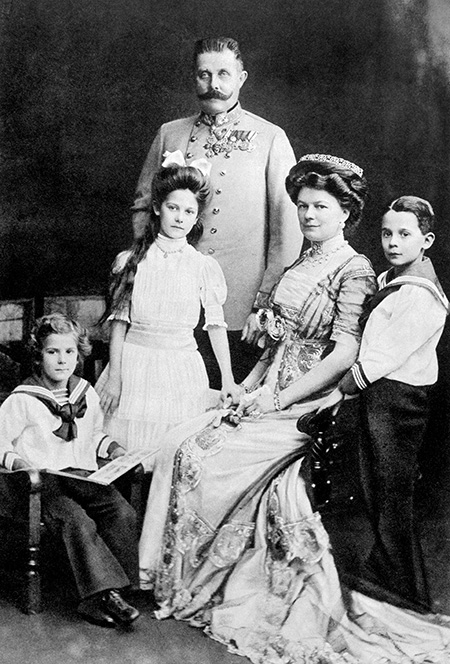 One hundred and ten years ago, in 1913 Archduke Franz Ferdinand and his wife Sophie were planning a visit to London. More liberal in their outlook than others in their family, they were most welcome and the visit of this young couple a great success. As a result, and in return, the British Royal family were therefore invited to Vienna later the following year.
At that time, most nations in Europe were ruled by a Royal family of whom many still held an executive role. In contrast, the British Royal family had a more ceremonial role which had emerged over the centuries and perhaps most distinctly after the English civil war of 1641 to 1647. Thereafter parliament reserved the right to raise taxes or go to war with more checks and balances in power.
One hundred and ten years ago, in 1913 Archduke Franz Ferdinand and his wife Sophie were planning a visit to London. More liberal in their outlook than others in their family, they were most welcome and the visit of this young couple a great success. As a result, and in return, the British Royal family were therefore invited to Vienna later the following year.
At that time, most nations in Europe were ruled by a Royal family of whom many still held an executive role. In contrast, the British Royal family had a more ceremonial role which had emerged over the centuries and perhaps most distinctly after the English civil war of 1641 to 1647. Thereafter parliament reserved the right to raise taxes or go to war with more checks and balances in power.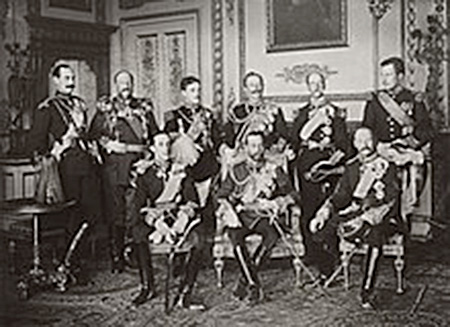 All these centuries of tradition and royalty in the great European Royal Houses dissolved in the mud of Flanders except that of the British Royal family, who continued and continue.
All these centuries of tradition and royalty in the great European Royal Houses dissolved in the mud of Flanders except that of the British Royal family, who continued and continue.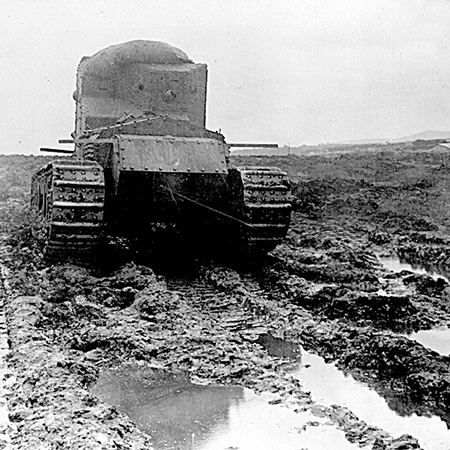 The coronation of the King, the decision of what name to take, the pageantry, the order and public display reach deep within the psyche of those who watch. It would seem that we are all trying to find anchors and roots, to be part of something, to be acknowledged for what we do and to find some sense of place and history. In return, in today’s world, the Royal family demonstrate their desire to serve and to say thank you and no one exemplified this more deeply than her Late Majesty the Queen for which she was honoured throughout the world.
The coronation of the King, the decision of what name to take, the pageantry, the order and public display reach deep within the psyche of those who watch. It would seem that we are all trying to find anchors and roots, to be part of something, to be acknowledged for what we do and to find some sense of place and history. In return, in today’s world, the Royal family demonstrate their desire to serve and to say thank you and no one exemplified this more deeply than her Late Majesty the Queen for which she was honoured throughout the world.
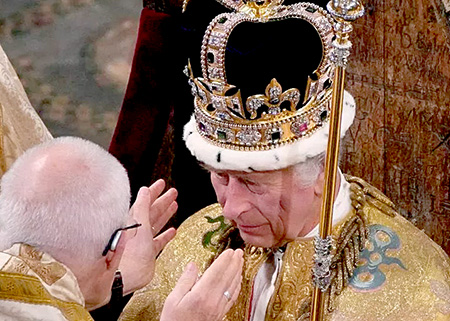 Her son has now taken up the mantel with crown, mace, carriages, gowns and visible traditions. None of this is new which is, in a way, part of the spectacle. It is an ancient tradition, rooted deep in earlier kings and values. It is about age and wisdom, something we all strive to find as we get older.
This coming week we are welcoming guests to Highclere both to enjoy the castle and to think about the regalia and accoutrements of kingship in another world: the one found by the 5th Earl of Carnarvon in the tomb of Tutankhamun. Tutankhamun’s tomb tells the story of the death of one king and the anointing of his successor King Ay. The brightly coloured wall paintings in his tomb depict the journey as the crown and power are handed over to the new monarch whilst also helping Tutankhamun pass over with all his royal regalia into the next world, the world of eternity.
Her son has now taken up the mantel with crown, mace, carriages, gowns and visible traditions. None of this is new which is, in a way, part of the spectacle. It is an ancient tradition, rooted deep in earlier kings and values. It is about age and wisdom, something we all strive to find as we get older.
This coming week we are welcoming guests to Highclere both to enjoy the castle and to think about the regalia and accoutrements of kingship in another world: the one found by the 5th Earl of Carnarvon in the tomb of Tutankhamun. Tutankhamun’s tomb tells the story of the death of one king and the anointing of his successor King Ay. The brightly coloured wall paintings in his tomb depict the journey as the crown and power are handed over to the new monarch whilst also helping Tutankhamun pass over with all his royal regalia into the next world, the world of eternity.
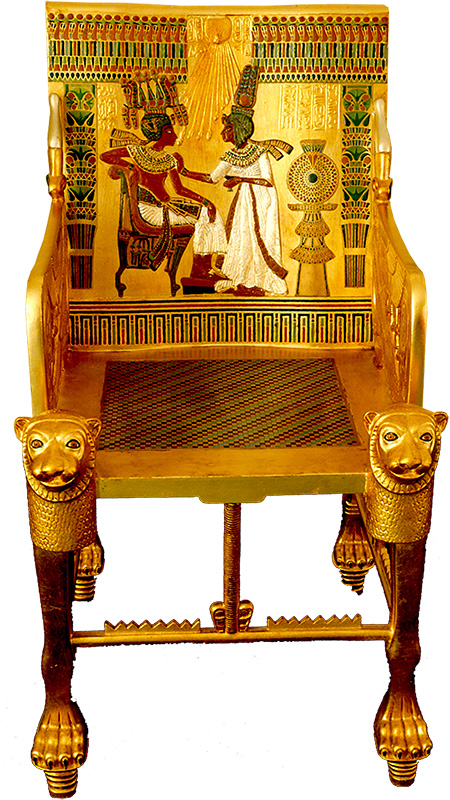 Tutankhamun was buried with everything he might need for the next world, most obviously gold, silver, jewelled thrones, staffs, jewellery, crowns, papyri, garments, beds: “everywhere the glint of gold”. These may have been symbols of power but they also belonged individually to Tutankhamun. They were made for him and he took them with him as he travelled into the night.
Tutankhamun was buried with everything he might need for the next world, most obviously gold, silver, jewelled thrones, staffs, jewellery, crowns, papyri, garments, beds: “everywhere the glint of gold”. These may have been symbols of power but they also belonged individually to Tutankhamun. They were made for him and he took them with him as he travelled into the night.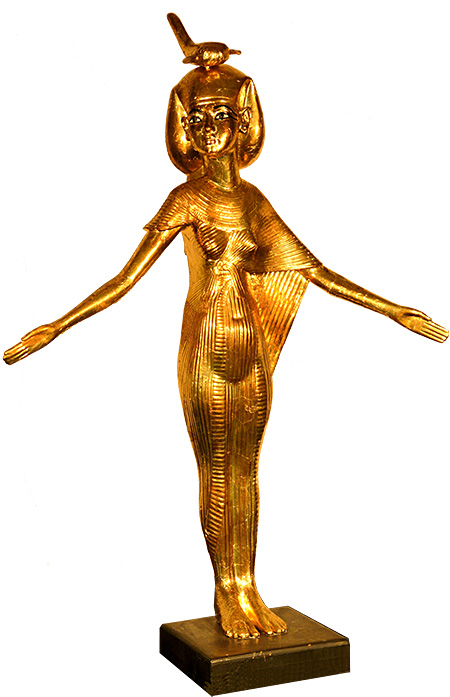 In contrast, King Charles III inherits crowns and thrones which are “borrowed” for the coronation and which hold particular links to the past as well as different regions of the United Kingdom. Saint Edward’s crown testifies to the antiquity of the ceremony. Recreated by Charles II in 1661 following the time it was melted down by the Puritan government after the execution of his father, King Charles I, in 1649. In every way this crown itself represents the changes of fortune and re-balancing of power. The crown is named for King Edward the Confessor who was interred in Westminster Abbey and made a saint in 1161. The Abbey monks claimed they had been asked to look after his regalia for future generations. Supposedly the crown had previously been that of King Alfred the Great in the 9th century but whichever the case it is about the task of looking after the values and safety of the country over the ages.
In contrast, King Charles III inherits crowns and thrones which are “borrowed” for the coronation and which hold particular links to the past as well as different regions of the United Kingdom. Saint Edward’s crown testifies to the antiquity of the ceremony. Recreated by Charles II in 1661 following the time it was melted down by the Puritan government after the execution of his father, King Charles I, in 1649. In every way this crown itself represents the changes of fortune and re-balancing of power. The crown is named for King Edward the Confessor who was interred in Westminster Abbey and made a saint in 1161. The Abbey monks claimed they had been asked to look after his regalia for future generations. Supposedly the crown had previously been that of King Alfred the Great in the 9th century but whichever the case it is about the task of looking after the values and safety of the country over the ages.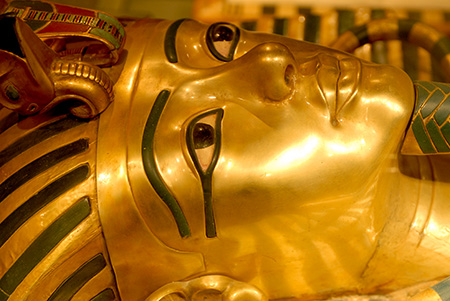 The 5th Earl found "wonderful things" in an ancient land, wealth and works of art of kingship beyond imagination. It was a colourful world both in life, in sunlight and in the eternity of the next world to which we all travel after this life for the after life. We of course have just watched the spectacle of King Charles III being clothed in gold, receiving symbols of royalty but which above all stand for mercy, righteousness, wisdom and prosperity and grace. Were such values part of Tutankhamun's world? I am not sure...
I am looking forward to this coming week. The theme of Egypt will once more inspire our History Festival in October - there will be Castle tours of course, but also sand, camels, excavations, early aircraft and more...
The 5th Earl found "wonderful things" in an ancient land, wealth and works of art of kingship beyond imagination. It was a colourful world both in life, in sunlight and in the eternity of the next world to which we all travel after this life for the after life. We of course have just watched the spectacle of King Charles III being clothed in gold, receiving symbols of royalty but which above all stand for mercy, righteousness, wisdom and prosperity and grace. Were such values part of Tutankhamun's world? I am not sure...
I am looking forward to this coming week. The theme of Egypt will once more inspire our History Festival in October - there will be Castle tours of course, but also sand, camels, excavations, early aircraft and more...
23 Comments
Quite a historic write-up again today guessing took a lot of your time for research of dates and facts. Thank you Lady Carnarvon.
Good luck with this week ahead and enjoy.
I enjoy research. - just lose myself !!!
The Coronation of King Charles was well done. I loved these pictures of some of King Tut's tomb artifacts and feel that is also an amazing accomplishment when you look at the condition of these ancient relics. I saw the traveling exhibit twice at different major U.S. museums long ago.
Thank you for your professional blog and how you bring Highclere to life through your excellent writings. Always interesting and timely. Also appreciated your talk during the Home Tour of historic Pine Apple, AL. as it was so thoughtful of you to put Alabama on your travels.
Savan Wilson
Thank you for asking me
We shall be at Highclere on Friday. Holding my breath until then. Best, Sandy Snyder
See you on FRiday!
Lady Carnarvon,
My husband and I, from California, slept overnight on the Mall to see the Coronation. Despite being wet and cold, it was a great experience. I'm sure the activities at Highclere will be just as wonderful for those who attend.
What an amazing experience! Hope you found some warm coffee too..
Lovely the pictures of wonderful pictures did you and lord Carnarvon lovely bank holiday weekend l like to visit highcelere castle and lam fan of Downton Abbey
Hope you will visit us - please bring some sun!!!
Thank you for a wonderful insight into our history. Indeed our heritage.
I just started watching Mummies on the Roku channel which looks at the process of mummification.
Of all the many details on the tomb walls, none detailed how mummification was actually done. It took Dr. Brier to create an actual mummy and then study the results. For those interested in the study of Egypt, I recommend this series.
Mummies have always fascinated us ...
Dear Lady Carnarvon,
Your post is full of wonderful things. The Coronation was also full of wonderful things. I wish King Charles the best with the future of his reign. I wasn't aware of the history of King Edward's crown. It is sad so many wonderful items of beauty were destroyed during those transitional times. I hope your coming week is as wonderful as King Tutankhamun's treasures. Take care.
Susan
I'm visiting Highclere Castle on Saturday for Tours and Talks cannot wait..
I Look forward to meeting you!
Thank you so much for another comprehensive lesson in history. I enjoy read g your weekly articles and your books. The book you wrote about Lady Almina is my favourite but I haven’t started your most recent work, The Earl and the Pharaoh.
I hope you enjoy it as much! Thank you
Lady Carnarvon,
Thank you for once again blending the past into today with this history. I so enjoyed seeing the wonderful pageantry as well as the holy service of King Charles’ coronation. It was a pleasure this morning to think about the ways royal histories can be similar, and I am glad my husband and I were able to visit the Egyptian museums at Highclere. We are fortunate to have been inside Buckingham Palace in that same trip in 2013 when it was in part open to the public. This was a wonderful trip!
Martha G
Thank goodness we can travel once more
An interesting fact now we have a King is that for roughly 130 years of the last 200 it has been a Queen on the British throne
The Coronation was wonderful! It was definitely worth getting up with the chickens to watch it on television. The music was splendid.
The pictures and historical aspects of the ceremonies are much appreciated. Thank you!
A trip to both England and Egypt are on my bucket list.
Have a nice week!
It was an amazing spectacle
Lovely the pictures did you have a lovely weather at the weekend l love to visit highcelere castle l am fan of Downton Abbey
Lady Carnarvon........Your insight and comparison and contrast between the British monarchy and Pharoahnic Egypt was thought provoking. You blog never fails to be enjoyable. Thank you for sharing your thoughts with us.
Thank you
Having just finished your book The Earl and the Pharaoh I enjoyed reading this week’s post as it complements the book. I will be coming to Highclere next April as part of a Viking Extension and am looking forward to seeing the Tutankhamen exhibit having been to Egypt and seen the collection in the Egyptian Museum. Your weekly posts are wonderful and informative, thank you for sharing so much with us.
Thank you - I hope you enjoyed the book
The only coronation I Ve seen. Beautiful ceremony.
Extraordinary!
Thank you as ever for. your thoughts. I am currently reading “The Earl and the Pharaoh” and am just getting the to part where Lord Carnavon has gotten permission to excavate near the site where they eventually discovered King Tut. I had no idea, until your book, how many excavations were being carried on by wealthy British on winter holiday. It has been a fascinating window into their world as well as the world of archeology at the time, not to mention Lord Canarvon’s interesting life. Since visiting Egypt, including King Tut, last fall, I have become more fascinated by Egypt than I was before I went. I can understand the lure that digging and finding must have had for those who were doing it because I find myself wanting to be there too.
I wish I lived close enough to visit during your History Festival but Iowa, USA is a little far to come. I did, however, buy a replica of Bastet from your shop when I visited Highclere in 2016 with a private group. Even though I know how the book ends, I am looking forward to the discovery of King Tut’s Tomb.
The book wends its way...!
Dear Lady Carnarvon,
I received your latest book on the 5th Earl for my birthday, a few weeks ago. It's a fascinating look into a totally different lifestyle and class. Being an American I have to remind myself why there is still a Royal Class and their purpose. I watched almost 5 hours of television coverage on Saturday morning, glued to the set! I think today's Monarchy serves, as much as they are served. King Charles is going to try his best to follow in his Mother's footsteps. I was born in 1950 so old enough to have watched the wedding of Charles and Diana and everything that followed. Many years later, it's time to go forward and wish the new King and his Queen, long lives, health & happiness.
Thanks for this lovely story. I'm going back to read more of The Earl and the Pharoh.
I was wondering if you and his Lordship were at the Coronation.
Most Fondly,
Peggy Helbling
Windermere, Florida
Thank for buying the book -thank you for reading it - I rely on you all or there is no reason to write.
I love your writing, a beautiful play of language, nature, history and current events. I am, too, an accountant but possess no such talent. Where do you get your inspiration to write (above all, when do you find the time)? Where do you write, do you have favorite writing nook? Do you write or do you type? Does take a couple of cocktails or cups of tea? Tell us more about the makings of your weekly blog, you obviously live in a very different world than the rest of us. Tell us more about yourself as a writer.
Cheers and happy Monday!
Thank you Eva- like all of you I live in the world of deadlines ...sometimes my writing comes from something I am thinking about, or a word I heard, a thought I had walking down a path..something that made me laugh... and then there is a deadline!!!
Hello, I visited Highclere last years oh my it was amazing I was actually so lucky to have also met you . It was a truly memorable experience. I am definitely planning to visit again as it is such a calming and peaceful place. Looking forward to seeing again
I look forward to seeing you!
My husband brought me to Highclere Castle yesterday for my 50th birthday. I of course am a huge fan of both Downton Abbey and our history. I so was excited to walk the rooms that I have seen many times on television. Once inside we listened to you talk about Wonderful things, I was completely enthralled. To hear about the history and especially the 5th Earl of Carnarvon left me wanting so much more. We were gifted your book and today I can’t wait to start reading it.
Of course my day was very special yesterday the guided tour of the house, Margaret was a fabulous guide, the Tutankhamun exhibition (my husband was very excited for this). Walking the beautiful gardens, seeing the American airman memorial - what a lovely tribute and then my husband cheekily asking you Lady Carnarvon to write a personal birthday message in my book how fabulous! Getting to have a conversation with you, really made my day something I will treasure forever. Off now to drink my tea and start reading your book! Thank you.
Samantha Warren
Redditch, Worcestershire
Happy Birthday - so pleased you enjoyed your day at Highclere
Hello Lady Carnarvon,
I recently had the pleasure 0f visiting Highclere Castle last week for my 60th Birthday, I must say it was an unforgettable experience. I still haven't come down from my excitement. This was a trip of a lifetime and the first time I have been to the UK. While we walked up the lane to Highclere Castle and just when you come around the bend you see the glimpse of the castle. It was so surreal it took my breath away. In honor of being Downton Fans, we wore our 1920s hats during the entire day.
The architecture and the atmosphere, once you walked through those front doors, were simply breathtaking. as well as when we walked into the library the room, it is so warm and inviting.
I could just see the family sitting on the beautiful red couches with a fire in the fireplace.
The rooms were stunning and the stories told by the staff brought the history of the Castle to life. All of us thoroughly enjoyed the Tutankhamun exhibition as well, we felt privileged to be able to enjoy them, as well as the gardens outside.
Overall I cannot recommend a visit to Highclere Castle highly enough, it is a true gem of English history and architecture and I feel lucky to have had the chance to experience it firsthand.
Thank You for opening your beloved home to all of us and for preserving such an important part of our heritage. I also can't wait to finish reading my book as it brings everything back so wonderfully.
Lastly, the sign at the bottom of the Grand Staircase " Mary and Lord Grantham have walked down these stairs and now so have You" How that touches my heart more than you will ever know.
Sincerely Yours
Till we meet again,
Beth Smith
You are very kind thank you
Good Morning Lady Carnarvon,
My husband and I recently had the pleasure of visiting Highclear Castle and thoroughly enjoyed this wonderful place. I have longed to visit since before lockdown and have been patiently waiting for the opportunity. I loved the beautiful pietra dura table in the smoking room and the Egyptian museum. I visited Cairo museum some years ago and thought yours was better, more compact! but just as beautiful.
It was such a pleasure to receive your book, Lady Almina, thank you so much. I have just finished reading it and found it so interesting. What a woman she was, she did so much for the castle and the patients and everyone. My grandaughter (Evie aged 10) has been learning about Tutankhamun, Lord Carnarvon and Howard Carter at school for the 100th anniversary, she is now quite an expert, it fascinates her, so I have given her one of the Lady Almina books and she has claimed the Egyptian museum book.
Thank you once again for the lovely books and for the wonderful day at the castle.
Our very best wishes to you and everyone at Highclere.
Sandria and Alan Maddocks of Derby
Dear Lady Carnarvon:
Thank you for this Monday's very interesting blog.
As always, the story line is appropriately themed with current world events, and the photographs that accompany it are rich in color and history.
Until next time, best wishes to you.
Perpetua Crawford
Leave a Comment
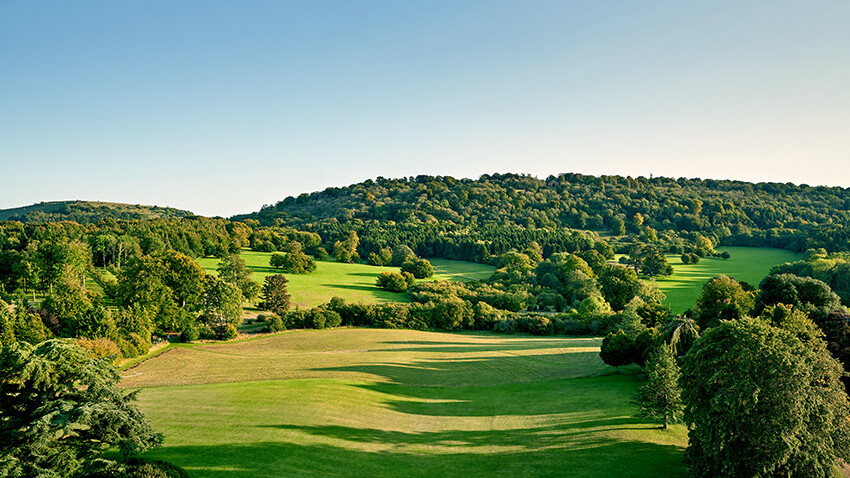
- Christmas
- Community
- Dogs & Horses
- Egypt & Tutankhamun
- Entertaining
- Farm
- Filming
- Gardens
- History & Heritage
- Daily Life
- Royalty
- Cooking
- Interiors
- Heroes
- Architecture
- Cars
- Conservation
- Downton Abbey
- Events
- Gardens & Landscape
- Highclere Castle Gin
- History
- Planes
- Restoration
- Stories & Books
- Uncategorized
- Visitors
- Wildlife

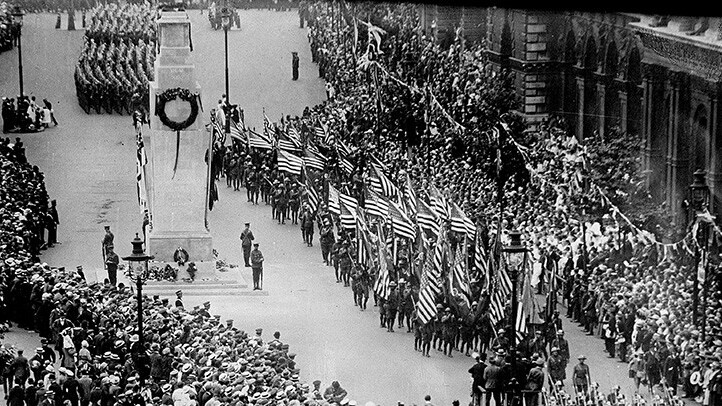
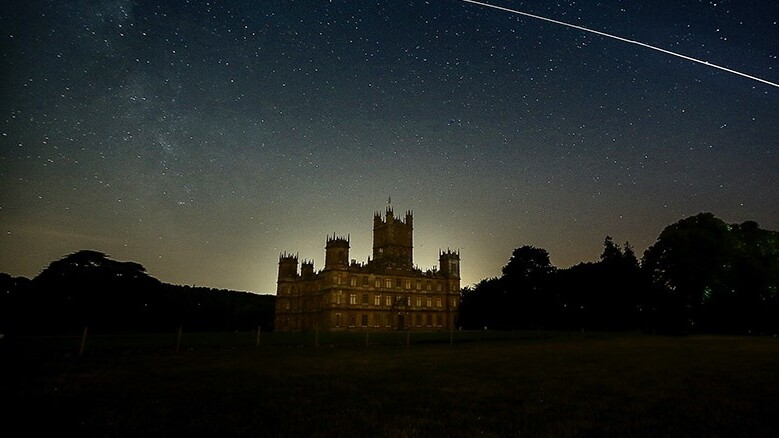
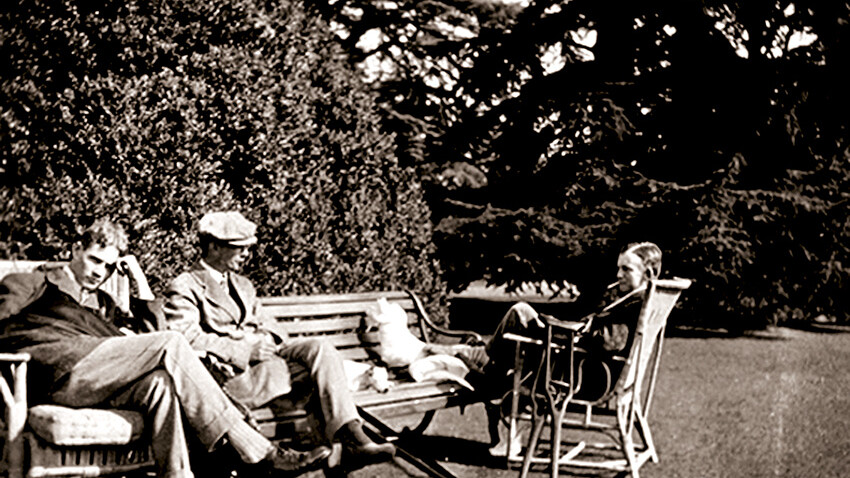
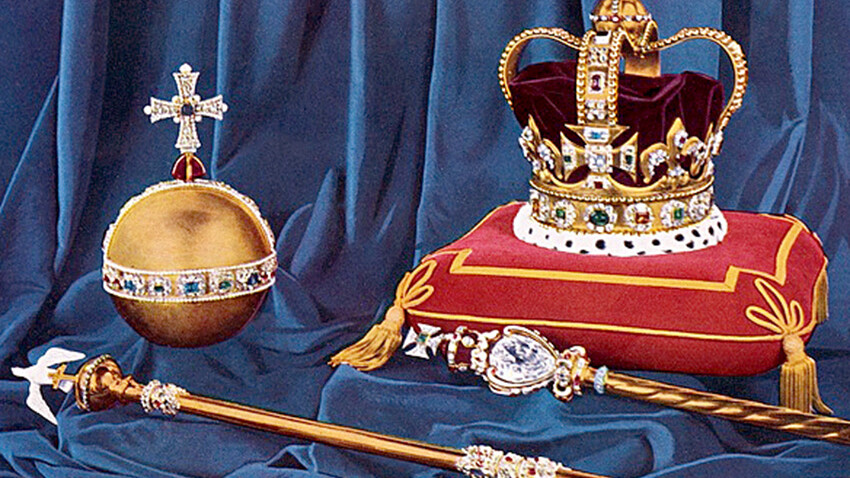
I have just returned from my trip to Egypt a few days ago. Reading your wonderful new book about Lord Carnarvon and Howard Carters discovery of King Tuts tomb really helped set the background for what I saw in the Valley of the Kings. I travel next Monday to visit Highclere Castle and hear your talk about
"wonderful things." I'm so excited!!
Sincerely
Janet Grojean
The Bookworm
Reitired Event Coordinator
Omaha Nebraska
See you next Monday